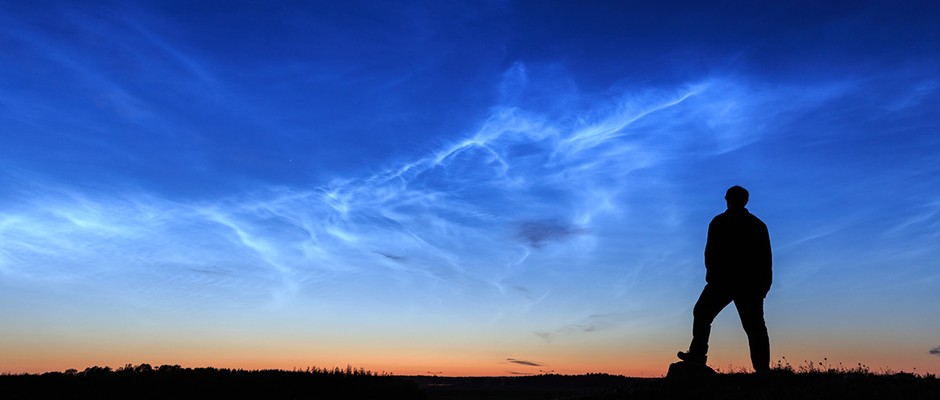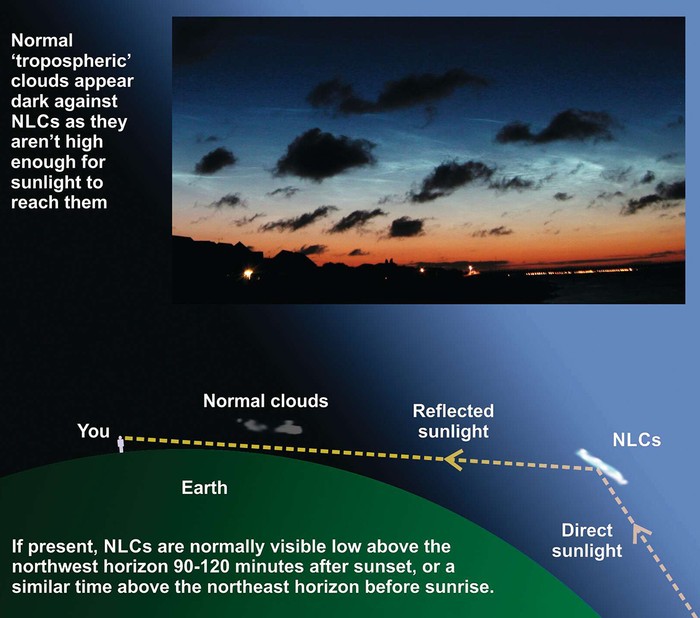
How do I see noctilucent clouds (NLCs)?
Night shining clouds occur in the upper atmosphere and appear to glow in the dark.
Night darkness is in short supply between late May and early August, as sunset is late in the day and sunrise early. In addition, the Sun’s position below the northern horizon in the middle of the night means much of the UK never sees proper darkness at all. Although this is a challenging time for stargazing, there is another phenomenon that can only be seen at this time of year.
Noctilucent clouds (NLCs) are ice-sheet clouds forming at an altitude of around 80km (50 miles) in a thin region within the mesosphere. The mesosphere is a defined layer of Earth’s atmosphere, extending from an altitude of 50-120km (30-75 miles).

During the northern hemisphere’s summer, the temperature of the mesosphere drops and any water vapour present becomes supercooled. If small particles pass through the supercooled vapour, tiny ice crystals form creating NLCs. If you’re wondering what the astronomical connection is here, the natural supply of seeding particles is the dust left after a meteor vaporises in the atmosphere.
If present, NLCs can normally be seen low above the northwest horizon between 90 and 120 minutes after sunset, or low above the northeast horizon before dawn. Extensive displays may appear low in the northwest, track through north and end low in the northeast.
Despite the Sun having set for us on the ground, from the altitude of the NLC sheet the Sun is still up. Consequently, the sheet reflects sunlight and, from our perspective at least, appears to shine at night. This is where they get their name: noctilucent means ‘night shining’.
NLCs can be very beautiful, glowing against the deep twilight sky with a vibrant electric blue colour and often showing fine, net-like structures.
Read more:
- How do I see Lyra the Lyre?
- How can I spot the International Space Station?
- When I look to the stars, how far back am I seeing?
- Why can you see faint stars better if you don’t look directly at them?
To submit your questions email us at questions@sciencefocus.com (don't forget to include your name and location)
Authors
Sponsored Deals

May Half Price Sale
- Save up to 52% when you subscribe to BBC Science Focus Magazine.
- Risk - free offer! Cancel at any time when you subscribe via Direct Debit.
- FREE UK delivery.
- Stay up to date with the latest developments in the worlds of science and technology.





